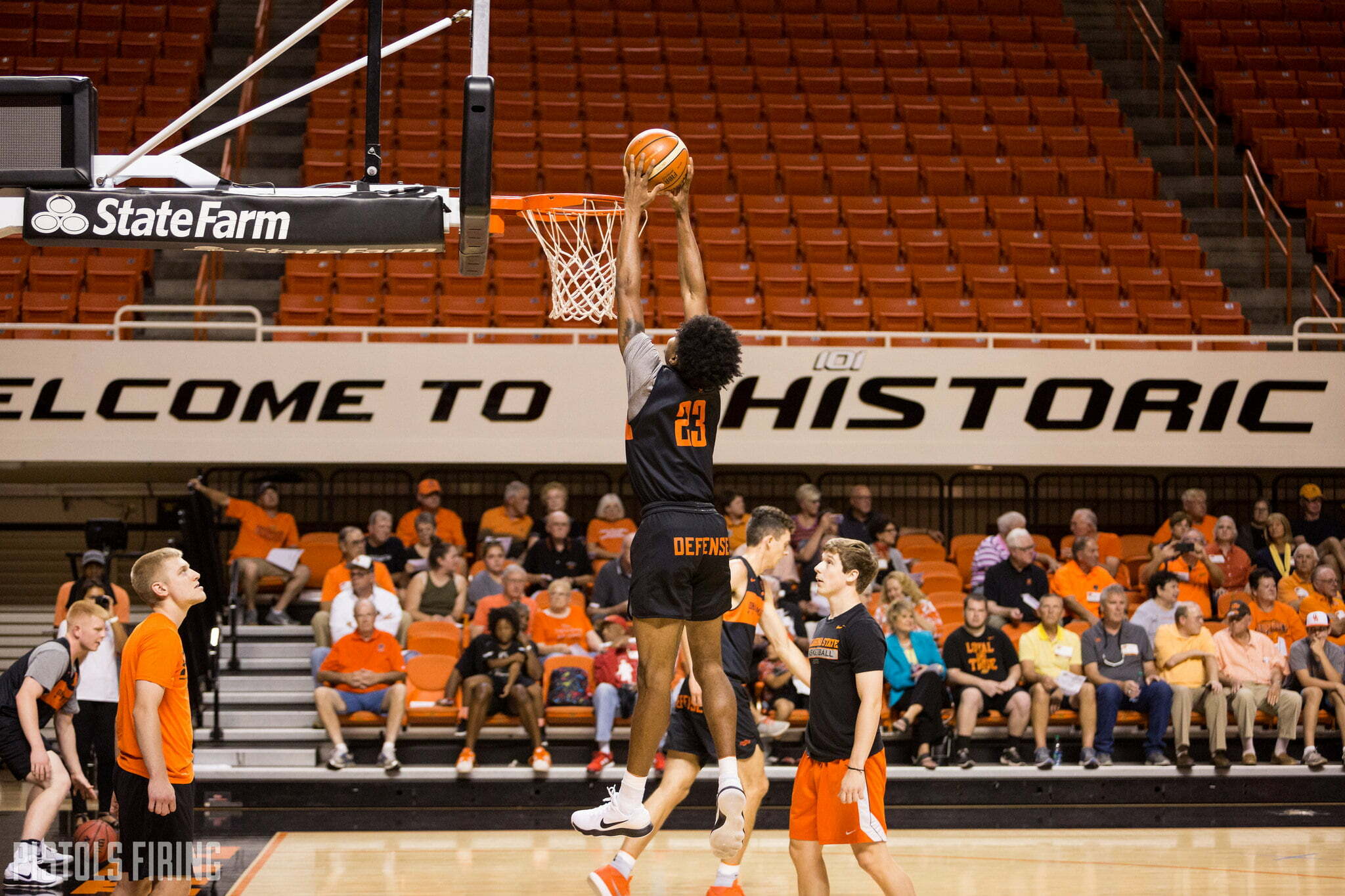Hoops
OSU Killed the BCS, And it Might’ve Been the Catalyst to Killing the RPI, Too
You can thank Mike Holder and Co. later.

In 2011, when an 11-1 Oklahoma State team that captured the Big 12 in dominant fashion was left out of the BCS National Championship game by the narrowest margin in the history of the formula, it catalyzed a review of the title-inclusion process for the sport’s most prestigious game.
Sure, moving towards a playoff format made more sense for anyone with two eyes and a heart that had any remote interest in more college football. But the playoff also made more sense to prevent a 2011-like episode from happening again; screwing the Oklahoma State’s of the world out of playing in the biggest stage thanks to a computer metric was less than ideal, even if TV execs (probably) drooled over an SEC-on-SEC championship rematch.
The BCS was eventually nixed once and for all in 2014, after a 16-year run as college football’s most cited metric.
Credit the money-hungry executives who pushed for the BCS to be put out to pasture in favor of a playoff system — more games equals more money, which in turn, means more salary for those with skin in the game — but Oklahoma State’s championship rejection thanks to an obviously flawed computer metric played a role in the re-make of college football’s biggest game.
On a lesser scale, Oklahoma State may also have played an instrumental role in killing an even more scrutinized metric in the RPI, which Wednesday the NCAA announced was dying a swift death and being replaced with a new metric called the NCAA Evaluation Tool — The NET, for short.
Yes, that’s right, just months after Oklahoma State was head-scratchingly left out of not only the NCAA Tournament — but also the last four in — due to an abysmal RPI but favorable metrics at nearly every turn, it too is joining the BCS in the cow pasture. Finally.
So what is the NET, what does it mean about the NCAA Tournament selection process, and what should we expect about what this means moving forward? Here’s three things to know about the new system.
1. The NET is one metric
Built with the help of Google technologies, the NET takes into account a number of results-based data with a big splash of predictive element. There are five different components that are taken into account in the NET.
- Team value index — The TVI is based on win-loss results and strength of schedule. This metric will also take into account strength of opponent.
- Team efficiency — This metric is a factor taking into account a team’s average efficiency, which is points scored and points allowed per 100 possessions on offense and defense. This is a KenPom staple, and, like KenPom, it includes a predictive element.
- Adjusted winning percentage — This will take into account a weighted system crediting teams with road wins, balancing out neutral court games, and docking teams for home losses.
- Wins — Wins matter. This has not changed.
- Scoring margin — Here’s a new element that makes things interesting. For the first time ever in the NCAA Tournament inclusion metrics, teams will be graded and placed factoring in how much they win (or lose) games by.
2. The quadrant system lives on
While the RPI will be dormant and dead forever, the quadrant system, which was introduced last season, is not. It was met with mixed reviews in its first year, but overall it’s a step in the right direction to evaluating wins and losses based off location, etc.
Here’s a rundown of the quadrant system that will continue to be a staple on team sheets in years to come.
- Quadrant 1: Home 1-30, Neutral 1-50, Away 1-75
- Quadrant 2: Home 31-75, Neutral 51-100, Away 76-135
- Quadrant 3: Home 76-160, Neutral 101-200, Away 135-240
- Quadrant 4: Home 161-353, Neutral 201-353, Away 241-353
3. The NET is … complicated
One metric, five key components (see No. 1), but innumerable ways to coming to a final NET is basically how this looks as of now. There is no hard-and-fast definition to the Team Value Index yet, and as of now, the formula for the NET isn’t available to the public. In fact, NCAA official Dan Gavitt says it’s formulated using artificial intelligence.
Nate Silver has thoughts on that.
Any sports metric that claims it uses "artificial intelligence" is probably badly designed. https://t.co/ooo2AFIWHS
— Nate Silver (@NateSilver538) August 22, 2018
Jerry Palm wrote about the lack of transparency of the new system for CBS Sports. Here’s a snippet of why there’s some skepticism for now.
Gavitt was even reluctant to use the word “formula” to describe it. He said that, “formulas are archaic, like the RPI was” and said that the artificial intelligence algorithms may not be easy for people to understand.
So what if that is true? People should know specifically how they are being judged. Say what you want about the RPI, at least teams knew how to figure it out. If the algorithms (a fancy word for formula) are too complex for people to understand – and let’s be clear, that includes the committee itself – then they are too complex, period.
The NCAA will make its rankings available, but releasing the formula is also important so that the results can be independently verified. Every year since the RPI formula became publicly available, I have found mistakes in the data that the NCAA used to calculate the RPI. I found those errors because I was able to duplicate the formula and investigate differences between my data and theirs. I was not the only one who found these errors. The NCAA relies on schools to self-report data that will be input into this system. Sometimes, there are mistakes, which are more likely to slip through the system if the results cannot be independently verified. [CBS Sports]
Overall, the death of the RPI is a more welcome one than the death of the BCS. The development won’t be met with as much fanfare given its murky replacement with the NET, but the new system ensures teams will be evaluated more accurately moving forward for the NCAA Tournament selection process.
It also means Oklahoma State would have been in the Big Dance last March.
At least this time, the national championship isn’t the big “what if?” at the center of it all.

-

 Football5 days ago
Football5 days agoFour-Star Quarterback Adam Schobel Commits to Oklahoma State, Flips from Baylor
-

 Hoops5 days ago
Hoops5 days agoFour-Star Signee Jeremiah Johnson Reaffirms Commitment to Oklahoma State after Coaching Change
-

 Hoops5 days ago
Hoops5 days ago‘Keep Turning Over the Rocks’: Looking at the Portal Landscape as Lutz Looks to Solidify His First OSU Roster
-

 Daily Bullets4 days ago
Daily Bullets4 days agoDaily Bullets (Apr. 23): Pokes Land Four-Star Quarterback, Retain Talent from Mike Boynton Era






